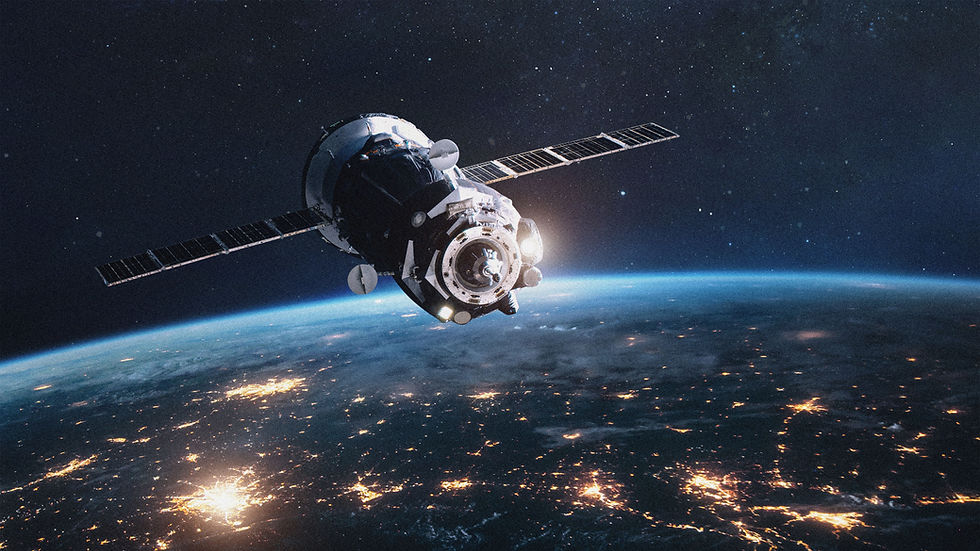The Importance of Aviation in Aerospace
- Amanda Grodman

- Dec 30, 2022
- 3 min read
Updated: Jun 2, 2023
Although aviation and aerospace are similar in a general sense, they otherwise might appear as polar opposites; one is used by millions for transportation daily, while the other is every young astronaut’s aspiration. However, there is not only a great and overlooked intersection of these two disciplines, but a paralleled impact seen in both fields through their development. During the emergence of aviation in the early 1900s, few could predict that the birth of more aerodynamic wings, refinement of fueling capabilities, and the implementation of aircraft in war would directly catalyze the founding of NASA and the first space shuttle's construction; and new discussions in public lunar travel make the strengthening of these fields evermore important. With contemporary developments in the aerospace realm, from Artemis to rovers, comes paralleled strides in aviation seen in the increased robotization and digitalization of programs and repair.

The main difference between aerospace and aviation is not so much the composition of either craft, but more so the atmospheric distance in which these components travel. Aviation is a specific component of aeronautics within earth’s atmosphere, while aerospace is concentrated out of the atmosphere, typically in a lunar sense. Aviation is also thought to be more industrial-based, with funds generated from airports and airline industries, while aerospace is more research, design, and manufacturing-based. Of course, aviation can be seen as a daily necessity for travel-goers, with such transportation expanding in a private sense, while aerospace has historically been a privatized operation. Yet, aerospace and aviation have contributed to vital scientific knowledge, from planetary motion and spatial composition to aerodynamics. Both fields, regardless of their projected heights, encompass great amounts of trial and error, intensive safety research, and new technological implementations seen yearly.

The 1900s was pinnacle in the evolution from the first aircraft flight to the founding of NASA and eventually the first human on the moon. Aviation in the late nineteenth century was questioned for its credibility–yet only a few decades later, international travel would be established with safety measures increasing dramatically. During this time, the vast refinement of all components of the plane–from the engine to methods of landing and even in-flight refueling–would allow the emergence of the first rocket in the 1940s (WAC Corporal), launch of the first satellite in the 1950s, and the historic Apollo mission. Fighter aircrafts seen in the world wars soon matured into spacecraft, such as the Voyager (which relied on previous knowledge of aerodynamics), then being followed by the first space shuttle. Aviation and aerospace were soon used not for war or destruction, but to further global–and planetary–communication. Through aerospace-oriented developments, NASA and similar corporations have aimed to expand and improve the aviation field. Currently, aviation and aerospace have certainly developed their own identities, although new discussions of private space travel show increased availability of space to unordinary space-goers; certainly, space may be the next tourist destination. To us, the distinction between aerospace and aviation does not hurt the integrity of either field; and for some educators, combining both can be an effective teaching methodology.

In this episode of “Let’s Go to Space: BLUESKY Learning,” Episode 86: Aviation in the Classroom with Rockstar Educator Kaye Ebelt, we’re joined with Kaye Ebelt, an educator who truly encompasses the intersection of aviation and aerospace. Ms. Ebelt is an Albert Einstein Distinguished Fellow, Presidential Award for Math and Science Teaching finalist, and has earned multiple degrees from Massachusetts to Montana. In addition, she is an avid pilot and is currently the STEM Curriculum Director of the Civil Air Patrol, serving as Lieutenant Colonel. Ms. Ebelt teaches Elementary Science, Aeronautics, and Engineering at the Greene School in West Palm Beach, FL, on top of her several impressive titles. If anyone is to share insight on combining a love of aviation to critical classroom applications, it’s Ms. Kaye Ebelt. Learn more about Kaye Ebelt or visit our other weekly podcasts to hear from other speakers, by clicking the link above. Also make sure to check out our website to learn more about becoming a member of the Aerospace and Innovation Academy, where you can join us in our quest to go to space.




Comments